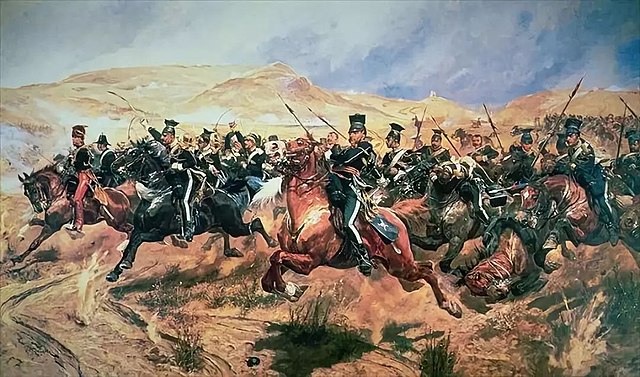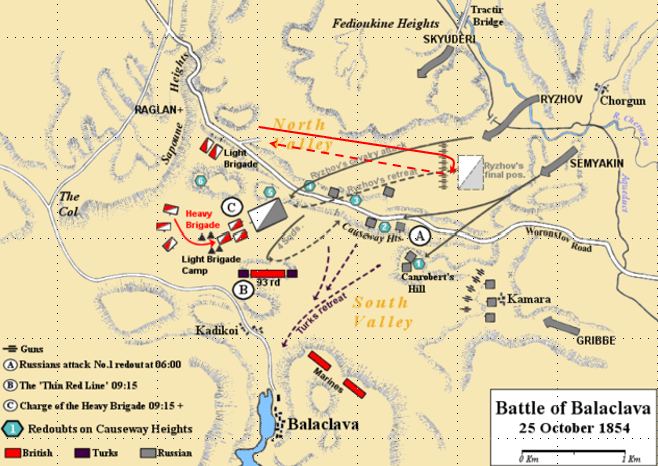
I struggled to decide the topic of the first History PM post, and finally picked communication; a blog is communication after all. Communication is an integral part of Project Management, whether it be traditional or agile. It is central to all the process groups in the PMBOK. What is communication and why is it so important?
Dictionary definition
“the imparting or exchanging of information or news”
Oxford Dictionary
A PMI definition:
“The goal of any communication planning is to establish communication with stakeholders that manage their perceptions of the project …“
Note 1.
The Irish playwright George Bernard Shaw, once quipped:
“The single biggest problem in communication is the illusion that it has taken place.”
George Bernard Shaw
This neatly encapsulates the primary problem with communication.
For Britain the Crimean war took place from May 1854 to March 1856. The protagonists were the Russian Empire on one side and Britain, France, and Turkey on the other. The war was fought to contain Russian expansionism, and support Turkey who was bearing the brunt of Russian aggression, or at least that was the official British and French positions.
The British army had not fought a European war since Waterloo in 1815, and despite many technological improvements was extremely ill equipped to do so.
Following the declaration of war in March 1854, Britain dispatched an army to the Crimea, stopping first in Varna in Bulgaria, where dysentery ravaged the ranks. They landed in the Crimea on the 14th of September 1854, winning the battle of Alma on the 20th. General Raglan the British commander ordered a flank march around Sevastopol to access the port of Balaclava and then proceeded to lay siege to Sevastopol.
The battle of Balaclava.
On the 25th of October, with the siege lines closing in, the Russian field army attacked to raise the siege.
The British command structure was as follows:
- General Raglan – Commanded the Army
- General Lucan – Commanded the Cavalry Division
- General Scarlett – Commanded the Heavy Brigade
- General Cardigan – Commanded the Light Brigade
- General Campbell – Commanded the Infantry
The battle opened with an attack on the Turkish position on Canrobert’s hill, which was overrun despite fierce resistance. The Russian cavalry then swung towards the port of Balaclava, only to be turned back by the 93rd highlanders. General Raglan then ordered an attack by the heavy cavalry under General Scarlett. Despite being heavily outnumbered they forced the Russians to withdraw, with the assistance of the horse artillery
The battle was effectively over and although a nominal Russian victory the attempt to break the siege and capture Balaclava was thwarted.
However, a final tragedy remained to be played out.
Raglan from his elevated position could see that the Russians were preparing to carry-off the captured Turkish guns, and had his aide draft a message to General Lucan.
“Lord Raglan wishes the cavalry to advance rapidly to the front, follow the enemy and try to prevent the enemy carrying off the guns. Troop Horse Artillery may accompany. French cavalry on your left. ” Immediate.
The message was entrusted to Captain Nolan, who promptly delivered the message. General Lucan asked which guns? to which Nolan gave a dismissive wave of the arm in the general direction of the Russians. Lucan then rode over to General Cardigan, who commanded the light brigade, and presented the order.
The Light Brigade of 673 men made was up of the following regiments.
- 11th Hussars
- 17th Lancers
- 13th Light Dragoons
- 4th Light Dragoons
- 13th Hussars
Cardigan also asked which guns, because the only guns that were visible to his front were the Russian batteries at the end of the North Valley. There was no option of disobeying the order, so Cardigan formed up the brigade and commenced the charge down the valley.
Theirs not to reason why, Theirs but to do and die.
The Charge of the Light Brigade
Tennyson

As the charge began Nolan suddenly rode across the front of the brigade waving but was immediately killed by a shell burst. The brigade charged down the valley through and into a hail of fire, they reached the guns and killed the gunners, but were forced to return through the gauntlet of fire. Of the 673 men who started the charge, 113 were killed, 134 were wounded, and almost all the horses were killed.
How could this have happened?
- The order was not clear. Raglan served with distinction in a staff role during the Napoleonic wars but was not an inspiring commanding general, and at times seemed confused. He would often refer to the enemy as the French. Despite being an aide to Wellington in his young days, he had never previously commanded any size of military unit.
- Nolan, the bearer of the order was arrogant and does not appear to have made any effort to clear up the confusion of Lucan and Cardigan. It is assumed that the reason he rode across the front of the Brigade, was that he belatedly realized that they were charging the wrong guns. His death means that we will never know.
- Lucan and Cardigan were brothers-in-law but despised each other so much that they were not on speaking terms. This means that it is unlikely that they discussed the order in detail or attempted to figure it out.
There were recriminations all round with everyone blaming someone else. Eventually blame settled on Captain Nolan, because he was the only one not able to defend himself. However, history has not been kind to any of the four main protagonists.
How can you avoid charging your project into “The Valley of Death”?
- Ensure that your instructions are clear, and that perceptions are harmonized across the project team.
- If someone is representing you, ensure they understand the requirements, and are willing and competent to communicate your wishes.
- If there are dysfunctional relationships, on your project team (Lucan/Cardigan), address them promptly and resolve the issue before a crucial juncture.
The Charge of the Light Brigade was just the most spectacular of the blunders and incompetency that was the Crimean War. The world was changing, and a new form of popular communication was emerging – Newspapers. The Crimean war was the first where correspondents reported directly from the front line. Foremost of these was William Russell of the Times. The advent of the telegraph meant that he could send his reports to London directly from the war zone. His reporting, sometimes unfairly, exposed all the problems and limitations of the British Army, and caused a public outcry, leading to Florence Nightingale’s hospital for the wounded, and ultimately to widespread reforms of the British Army. That however is a story for another post.
Note 1. Abudi, G. (2013). Managing communications effectively and efficiently. Paper presented at PMI® Global Congress 2013—North America, New Orleans, LA. Newtown Square, PA: Project Management Institute

Superb article!
Love the way you bring history to life and relevance.
I learned this poem back in my school days. The 1970s.
Important to be routinely reminded of the need for crystal clear communication.
Looking forward to more of your articles.
Oh my. I should not like to be a PM for a general….
A great article! Thanks for sharing your thoughts. Zeroing in on the 3 learnings for a “Valley of Death” avoidance on projects, drove home the points quite nicely. Well crafted! CONGRATULATIONS on pulling off the maiden piece!
Like Rashid, I too learnt this poem in grade school.
Went something like:
Charge of the Light Brigade, charge for the guns they said…
Jim wish you success in this great idea, which I’m sure you’ll implement with the usual eye for detail, genuine interest and great execution I have seen you use in the projects we’ve implemented together.
Great article, thanks for sharing.
Thanks for you support Rene. Glad you enjoyed it.